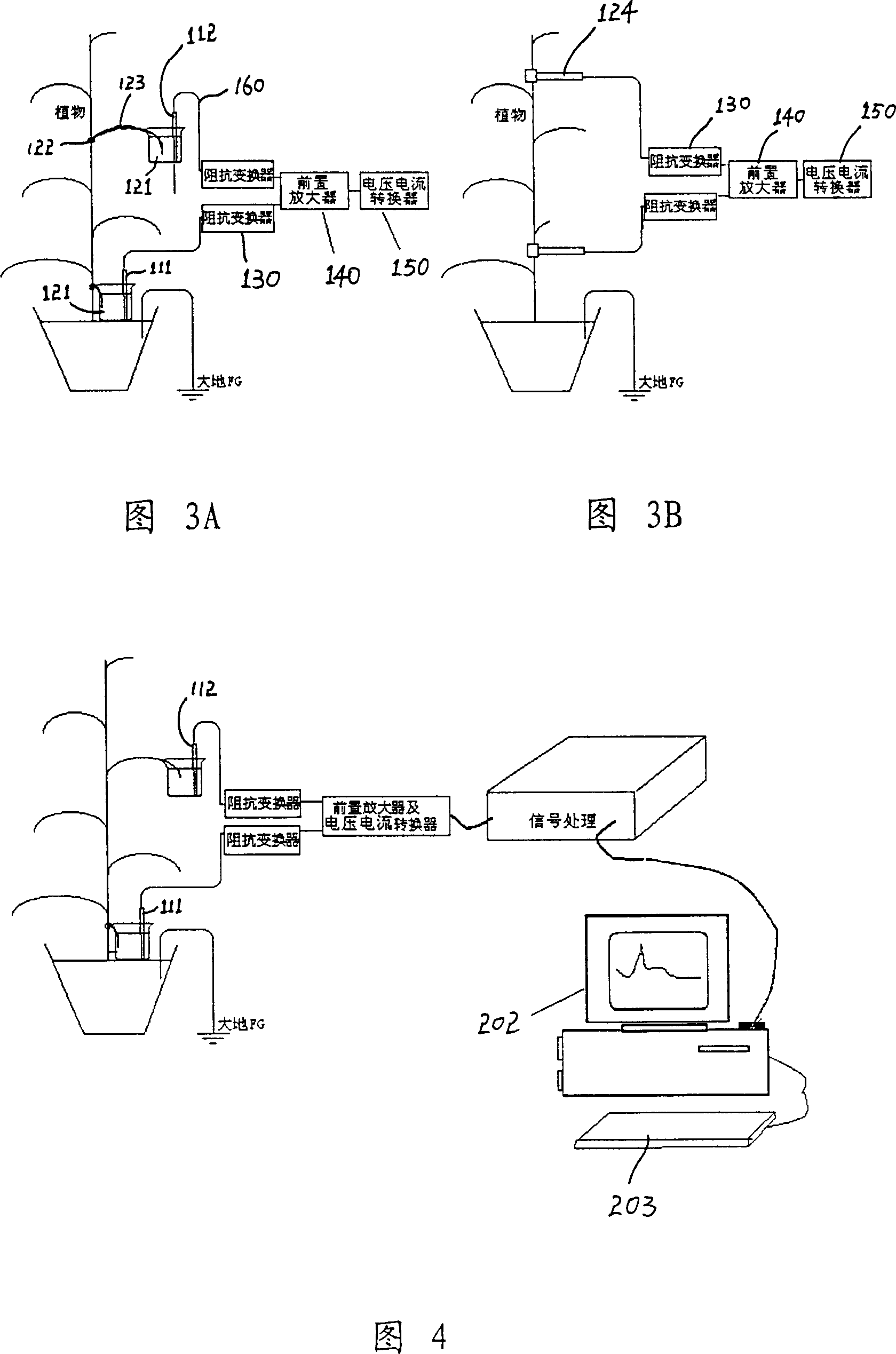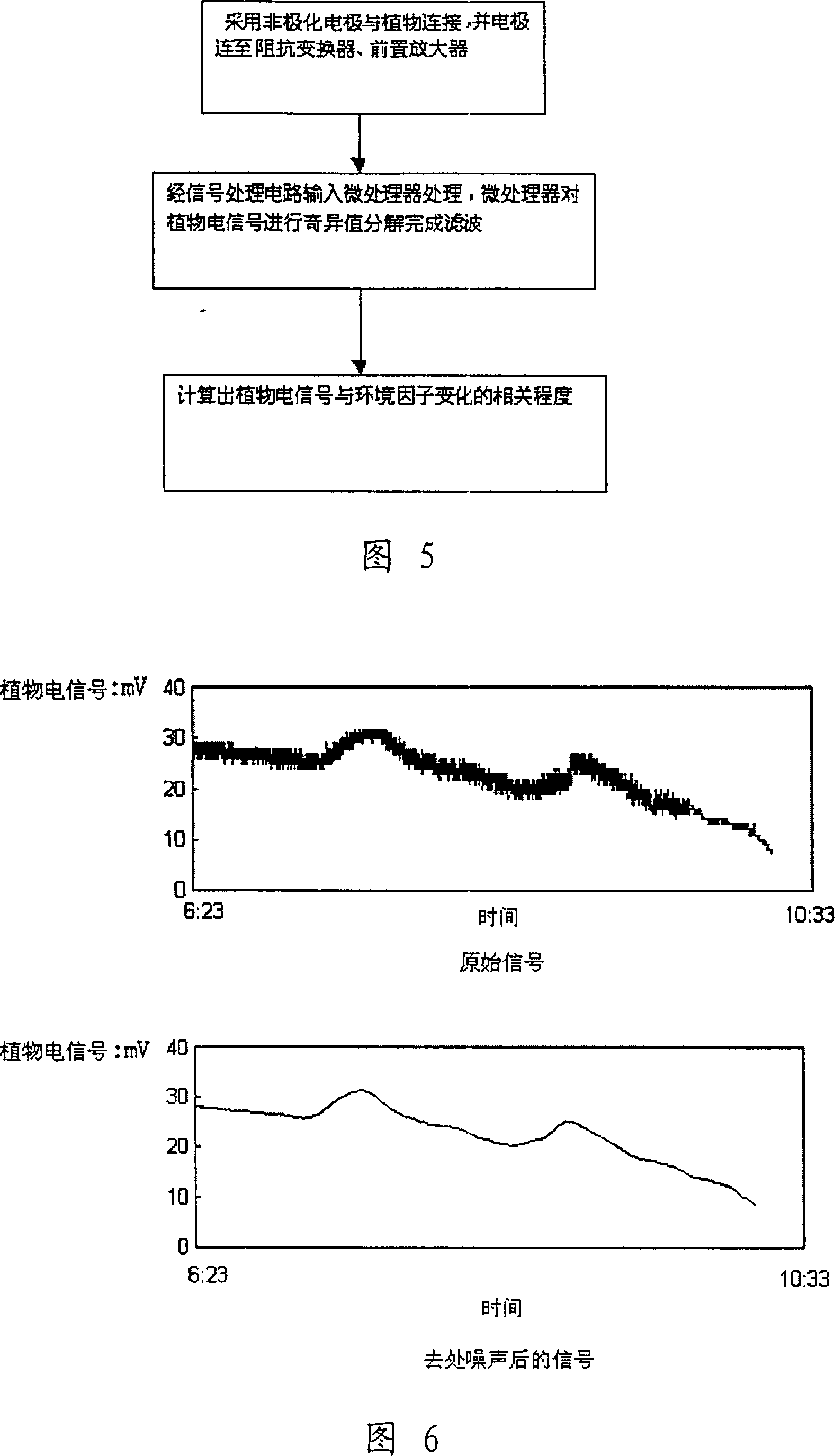Method for detecting plant electric signal in green house and special equipment thereof
An electrical signal, plant technology, applied in the field of agricultural information, can solve problems such as damage, discomfort in greenhouse applications, plant connection and fixation troubles, etc.
- Summary
- Abstract
- Description
- Claims
- Application Information
AI Technical Summary
Problems solved by technology
Method used
Image
Examples
Embodiment Construction
[0071] First, as shown in Figures 1 to 4, it is a device for detecting electrical signals of plants in a greenhouse provided by the present invention, which includes a signal detection device 100 and a signal processing device 200;
[0072] The signal detection device 100 includes two electrodes 111, 112 and an electrode connection device 120, the output end of each electrode is connected with an impedance converter 130, and the signal output end of each impedance converter 130 is connected with a preamplifier 140, the preamplifier The output terminal connected to 140 is connected to a voltage-to-current converter 150;
[0073] The signal processing device 200 includes a signal processing circuit 210 connected to the voltage-to-current converter 150 , and a microprocessor 201 connected to the signal processing circuit 210 . The microprocessor 201 is also connected to a memory 220 for storing data.
[0074] In the present invention, the signal processing circuit 210 specifically ...
PUM
 Login to View More
Login to View More Abstract
Description
Claims
Application Information
 Login to View More
Login to View More - R&D
- Intellectual Property
- Life Sciences
- Materials
- Tech Scout
- Unparalleled Data Quality
- Higher Quality Content
- 60% Fewer Hallucinations
Browse by: Latest US Patents, China's latest patents, Technical Efficacy Thesaurus, Application Domain, Technology Topic, Popular Technical Reports.
© 2025 PatSnap. All rights reserved.Legal|Privacy policy|Modern Slavery Act Transparency Statement|Sitemap|About US| Contact US: help@patsnap.com



